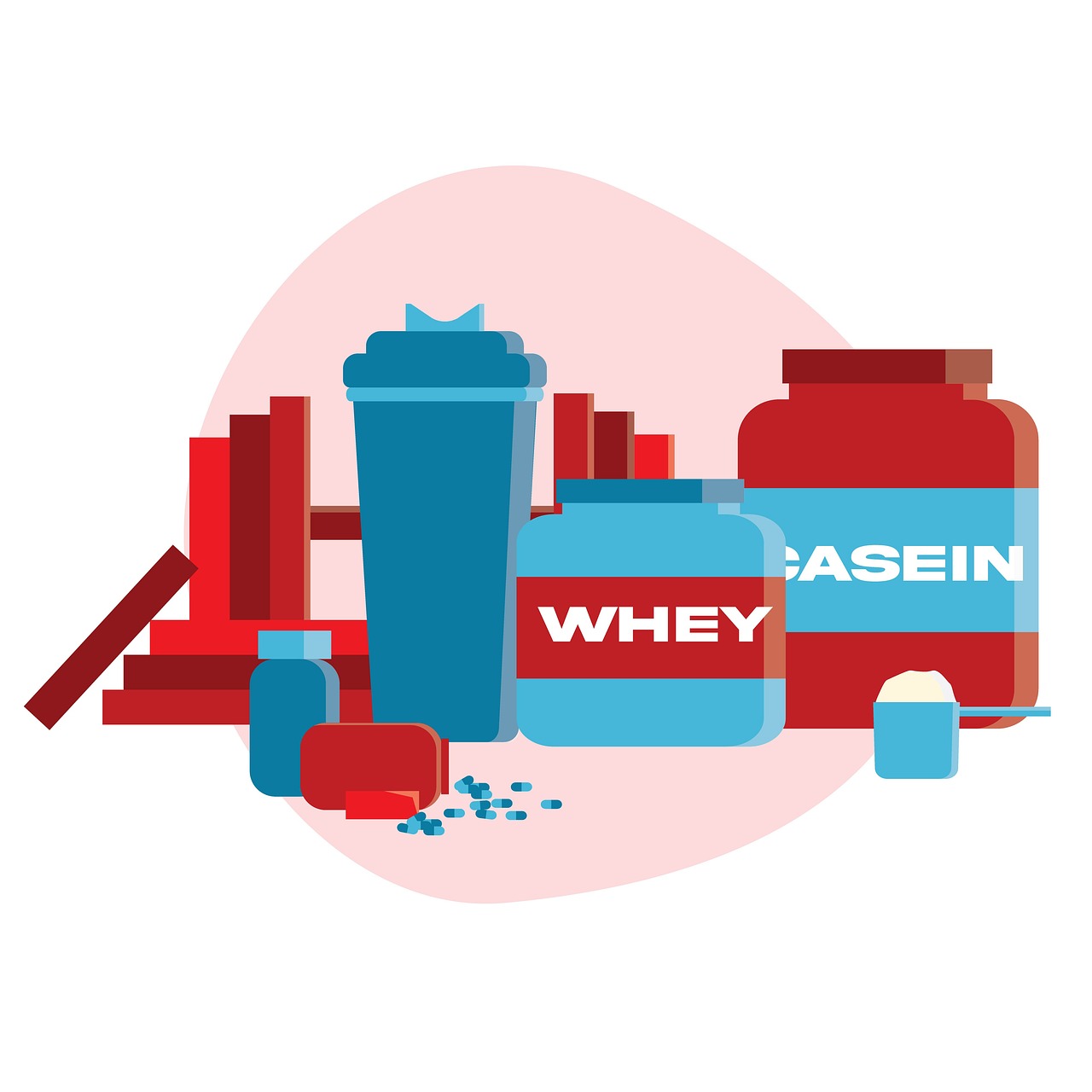Protein Powders Guide:
In the ever-expanding universe of nutritional supplements, protein powders stand as titans among the options available to fitness enthusiasts, athletes, and health-conscious individuals. Yet with shelves lined with countless containers promising everything from muscle growth to weight loss, how do you distinguish between marketing hype and genuine nutritional value? The difference between selecting the right or wrong protein powder can significantly impact your health goals – whether you’re looking to build lean muscle, recover faster from workouts, or simply ensure adequate protein intake within your busy lifestyle.
The protein powder market has become increasingly complex, with options ranging from whey to plant-based alternatives, concentrates to isolates, and prices varying from $1 to $4 per serving. What many don’t realize is that not all protein powders are created equal – their amino acid profiles, digestibility, and additional ingredients can make a substantial difference in their effectiveness for your specific needs. While whole foods provide comprehensive nutrition, protein supplements offer convenience and precision that many find invaluable in their health journey. The key lies in understanding which type aligns with your unique physiology, dietary restrictions, and fitness objectives.
This comprehensive guide will walk you through everything you need to know about protein powders – from understanding protein basics and distinguishing between various types, to selecting the optimal product for your specific requirements. You’ll discover how to maximize the benefits of your protein supplement, when to consume it for best results, and important considerations for special dietary needs. By the end of this article, you’ll be equipped to make an informed choice that supports your health and performance goals without unnecessary additives or expense.
Understanding Protein Basics
Understanding Protein Basics
The Role of Protein in Your Diet
Protein is a fundamental component of the human body, playing critical roles in numerous biological processes. It comprises various tissues and is essential for enzyme function and oxygen transportation via hemoglobin. The human body contains over 10,000 different proteins made from more than 20 amino acids. Of these, nine are classified as essential amino acids that must be obtained from dietary sources, as the body cannot synthesize them.
Proteins serve as building blocks for cellular structures and tissues, particularly through the action of collagen and keratin. They function as enzymes, acting as biological catalysts that enhance metabolic reactions. Additionally, proteins play vital roles in hormonal regulation, fluid balance, acid-base equilibrium, transport mechanisms, immune response, and even energy provision when carbohydrates are insufficient.
Whole Foods vs. Protein Powders
When considering protein sources, the concept of the “protein package” becomes important. This refers not just to the protein content but also to accompanying nutrients and compounds such as fats, fiber, and sodium. Different protein sources offer various nutritional profiles:
- A sirloin steak provides high-quality protein but also contains substantial saturated fat
- Lentils deliver protein with high fiber content and minimal fat
- Protein powders offer concentrated protein without many of the accompanying nutrients found in whole foods
Whole food protein sources can be categorized into animal-based and plant-based options. Animal foods typically provide complete proteins containing all essential amino acids, while many plant sources may lack one or more essential amino acids. However, research indicates that higher intake of plant-based proteins correlates with lower health risks, while diets high in red and processed meats are associated with higher mortality rates and increased risks of heart disease, type 2 diabetes, and certain cancers.
Environmental considerations also favor plant-based protein sources, as animal-based food production generates significantly higher greenhouse gas emissions compared to plant-based foods.
Daily Protein Requirements
The National Academy of Medicine recommends adults consume at least 0.8 grams of protein per kilogram of body weight daily. However, individual needs vary based on several factors:
- Age
- Activity level
- Health status
- Fitness goals
Most Americans generally consume sufficient protein but are advised to opt for leaner varieties and diversify their protein sources. Different protein foods contribute various essential nutrients like B vitamins, iron, zinc, and magnesium, which support overall health.
For practical purposes, protein intake is often measured in ounce-equivalents:
- 1 ounce of meat or fish
- ¼ cup of cooked beans
- 1 egg
- 1 tablespoon of peanut butter
- ½ ounce of nuts or seeds
It’s important to note that excessive protein consumption can lead to health issues, and the body lacks the capability to store proteins for future use.
Now that the fundamentals of protein and its importance in the diet have been established, the next section “Types of Protein Powders Explained” will delve into the various protein supplement options available and their specific characteristics to help determine which might be most suitable for different needs and goals.
Types of Protein Powders Explained

Types of Protein Powders Explained
Now that we understand the basics of protein and its importance for muscle growth and repair, let’s explore the various types of protein powders available on the market. Each type offers unique benefits and may be better suited for specific dietary needs and fitness goals.
Whey Protein: Complete Amino Acid Profile
Whey protein stands as the most popular protein supplement, renowned for its rapid absorption and complete amino acid profile. Derived from milk during the cheese-making process, it contains high levels of leucine, which is particularly effective for muscle building when consumed post-workout. Whey protein comes in several forms:
- Whey Concentrate: Contains 78-88% protein along with some lactose and fat, making it more flavorful and affordable
- Whey Isolate: A more refined option with approximately 98% protein content and minimal lactose and fat, ideal for those watching their calorie intake
- Whey Hydrolysate: Pre-digested for even faster absorption, though typically more expensive
Whey protein has earned a perfect score of 1 on the Protein Digestibility Corrected Amino Acid Score (PDCAAS), confirming its high-quality protein status.
Casein: Slow-Digesting Protein for Appetite Control
Like whey, casein is derived from milk but offers a completely different digestion profile. Casein forms a gel when it comes in contact with stomach acid, resulting in a much slower digestion and absorption rate. This provides a sustained release of amino acids to the bloodstream, making it an excellent choice for:
- Nighttime consumption before bed
- Extended periods between meals
- Appetite control due to its satiating effect
Casein also scores a perfect 1 on the PDCAAS scale, indicating excellent protein quality and digestibility.
Plant-Based Options: Soy, Pea, Brown Rice, and Hemp
For those following vegetarian, vegan, or dairy-free diets, several plant-based protein options are available:
Soy Protein: Made from ground soybeans, soy is a complete protein that supports muscle maintenance. It has achieved a perfect PDCAAS score of 1, matching animal-based proteins in quality. However, some individuals may need to limit consumption due to potential health concerns.
Pea Protein: Highly digestible and gentle on sensitive stomachs, pea protein scores 0.69 on the PDCAAS scale. While not a complete protein on its own, it can be combined with other plant proteins to create a complete amino acid profile.
Brown Rice Protein: A hypoallergenic option that works well for those with multiple food sensitivities or allergies.
Hemp Protein: Derived from hemp seeds, this option is rich in fiber and omega-3 fatty acids but contains less protein by weight. With a PDCAAS score of 0.46, hemp protein is often combined with other protein sources to enhance its amino acid profile.
Collagen: Benefits for Soft Tissue vs. Muscle Maintenance
Collagen protein differs from other protein supplements as it primarily supports soft tissue rather than muscle building. It offers benefits for:
- Skin elasticity and health
- Joint and connective tissue support
- Potential improvement in bone density
Unlike whey or casein, collagen is not a complete protein for muscle maintenance, as it lacks certain essential amino acids. However, it serves a complementary role in overall health and can be particularly beneficial for aging individuals concerned with joint health and skin appearance.
With an understanding of these protein powder types, the next section will explore how to choose the right protein powder based on individual goals, dietary restrictions, and specific health considerations.
How to Choose the Right Protein Powder
How to Choose the Right Protein Powder
Now that we have covered the various types of protein powders available in the market, it’s essential to understand how to select the most appropriate option for your specific needs. With countless products claiming to be the best, choosing the right protein powder requires careful consideration of several factors.
Matching Protein to Your Fitness Goals
Selecting the right protein powder begins with identifying your specific fitness objectives:
-
Muscle Building: Choose high biological value proteins with complete amino acid profiles, such as whey protein. Look for options with at least 20 grams of protein per serving and sufficient leucine content to trigger muscle protein synthesis.
-
Weight Loss: Opt for protein powders with minimal added sugars or sweeteners. Protein supplementation can aid weight management by increasing satiety and preserving lean muscle mass during caloric restriction.
-
Vegan or Vegetarian Needs: Consider combinations of plant-based proteins like pea, rice, or hemp to ensure a complete amino acid profile. While individual plant proteins may have lower digestibility scores, strategic combinations can effectively meet nutritional requirements.
-
Special Health Considerations: Those with diabetes may benefit from sugar-free options, while individuals with kidney concerns should consult healthcare providers regarding protein intake levels.
Protein Quality and Digestibility Scores
Not all proteins are created equal in terms of nutritional value:
-
Biological Value (BV): Measures how efficiently the body can use the protein consumed. Animal proteins generally score higher than plant proteins.
-
Protein Digestibility Corrected Amino Acid Score (PDCAS): Evaluates protein quality based on amino acid requirements and digestibility. Whey protein typically scores highest, while single-source plant proteins may score lower.
-
Digestive Considerations: Some protein types may cause digestive discomfort. For instance, whey concentrate contains lactose which may affect those with lactose intolerance, while certain plant proteins might cause bloating in sensitive individuals.
Processing Methods: Concentrates, Isolates, and Hydrolysates
The manufacturing process significantly impacts protein content, digestibility, and price:
-
Concentrates: Contain 70-80% protein with some fat and carbohydrates. More affordable but may cause digestive issues for those sensitive to lactose or other components.
-
Isolates: Undergo additional processing to contain 90% or more protein with minimal fats and carbohydrates. More expensive but typically easier to digest and absorb.
-
Hydrolysates: Pre-digested proteins broken down into smaller peptides for faster absorption. Most expensive option but beneficial for immediate post-workout recovery and for those with digestive sensitivities.
Reading Labels: What to Look For and What to Avoid
Careful label reading ensures you’re getting quality protein without unwanted additives:
-
Protein Content: Prioritize products with at least 20 grams of protein per serving to effectively support muscle synthesis.
-
Ingredient Transparency: Look for clear labeling of protein sources and additional ingredients. Be wary of proprietary blends that don’t disclose specific amounts.
-
Avoid Unnecessary Additives: Minimize artificial sweeteners, colors, and flavors. Some products contain excessive thickeners, stabilizers, or fillers that add no nutritional value.
-
Third-Party Testing: Quality brands often have their products tested by independent organizations to verify purity and potency.
-
Sugar Content: Be mindful of added sugars, especially if weight management is a goal. Some flavored products can contain significant amounts of sugar.
With the right protein powder selected based on your goals and preferences, the next step is optimizing its use in your daily routine. In the next section, we’ll explore the timing, dosage, and integration of protein powder supplements to maximize their benefits for various fitness objectives.
Optimizing Protein Powder Use

Optimizing Protein Powder Use
Now that we have covered how to select the right protein powder based on dietary needs and quality considerations, it’s essential to understand how to optimize its use for maximum benefits.
Timing Your Protein Intake for Maximum Benefits
Timing protein consumption plays a crucial role in maximizing its effectiveness. Research suggests that consuming protein powder post-workout can effectively support muscle recovery and growth. For individuals engaged in intense exercise, strategically timing protein intake helps repair damaged muscle tissue and promotes synthesis of new muscle proteins. The body is particularly receptive to protein intake within the post-exercise window, making it an optimal time to consume protein powder.
For weight management goals, protein powder can be beneficial when consumed as part of a meal or snack to promote satiety. The feeling of fullness that protein provides can help reduce overall caloric intake throughout the day.
Enhancing Flavor and Versatility
Protein powder offers remarkable versatility beyond the traditional shaker bottle. While smoothies remain popular, protein powder can be incorporated into numerous foods:
- Mixed into pancake or waffle batter
- Added to oatmeal or yogurt
- Blended into homemade energy bars
- Incorporated into baked goods like muffins and cookies
These methods not only enhance the nutritional profile of everyday foods but also provide variety to prevent flavor fatigue. A typical serving of protein powder provides approximately 20-40 grams of protein, making it a substantial nutritional addition to various recipes.
Cost Comparison: Powders vs. Ready-to-Drink Options
When evaluating protein supplements from an economic perspective, protein powders typically offer better value compared to ready-to-drink options. While whole food protein sources are generally more cost-effective and nutritionally complete, protein powders provide a convenient and often more economical alternative when compared to pre-packaged protein drinks or bars.
A cost analysis reveals that per gram of protein, powdered supplements tend to be significantly less expensive than their ready-to-drink counterparts. This cost advantage becomes particularly evident when purchasing larger containers of protein powder, which further reduces the per-serving price.
Addressing Potential Digestive Issues
Some individuals experience digestive discomfort when consuming protein supplements. Common issues include:
- Bloating
- Gas
- Stomach cramps
- Digestive irregularity
These symptoms often result from lactose intolerance (particularly with whey protein), high fiber content in some plant-based proteins, or artificial sweeteners and additives. To minimize digestive issues:
- Start with smaller serving sizes and gradually increase
- Consider digestive enzymes if lactose is problematic
- Stay well-hydrated when consuming protein supplements
- Choose protein powders with minimal additives and artificial ingredients
- Test different protein sources to identify which ones digest most comfortably
Excessive protein intake, particularly beyond 2 grams per kilogram of body weight, can exacerbate digestive issues and potentially lead to kidney problems in some individuals. Moderation remains key to avoiding these adverse effects.
With these optimization strategies in mind, next, we’ll examine special considerations for different populations and specific health conditions that may influence protein supplement choices.
Special Considerations for Different Needs
Special Considerations for Different Needs
Now that we’ve covered how to optimize protein powder use in your daily routine, it’s important to recognize that different individuals have unique dietary needs and health considerations. Selecting the right protein supplement requires attention to specific requirements based on lifestyle choices, health conditions, and personal goals.
Solutions for Vegetarians and Vegans
Plant-based protein options have expanded significantly to accommodate vegetarian and vegan dietary preferences. Products like EarthChimp Organic Vegan Protein Powder offer smooth texture and rich flavor while being enriched with probiotics and fiber. Other notable vegan options include:
- Sprout Living Epic Protein Vanilla Lucuma, featuring a unique blend of superfoods and high iron content
- KOS Organic Plant Protein, recognized for its balanced nutrient profile and appealing chocolate flavor
- Truvani Plant-Based Protein, known for its simplicity and smoothness
- Ora Organic So Lean & So Clean, distinguished by its flavor and independent verification
These vegan protein supplements ensure adequate protein intake without animal-derived ingredients, making them suitable for those following plant-based diets.
Options for Those with Dietary Restrictions
Individuals with dietary restrictions require careful consideration when selecting protein powders. For those with lactose sensitivity, Klean Athlete’s unflavored option provides a lower lactose content alternative. When dealing with allergies or sensitivities, key considerations include:
- Looking for products with simple, recognizable ingredients
- Checking for independent verification of product claims
- Ensuring the absence of common allergens relevant to individual restrictions
It’s particularly important for individuals with dietary restrictions to consult healthcare professionals before incorporating protein supplements, as these may interact with medications or existing health conditions.
Protein Powders for Weight Loss
For individuals focused on weight management, certain protein supplements may offer specific benefits. Products with higher protein content and fewer additives, like FlavCity Protein Powder, can support weight loss goals. When selecting protein powder for weight management:
- Choose options with minimal added sugars and artificial ingredients
- Look for supplements that offer satiety benefits
- Consider the caloric content in relation to overall dietary needs
Protein supplements can be valuable tools in weight loss programs, but should be incorporated as part of a balanced approach to nutrition rather than relied upon exclusively.
Seniors and Muscle Preservation
Aging is associated with natural muscle loss, making protein intake particularly important for seniors. While specific senior-targeted protein powders weren’t explicitly mentioned in the reference material, the following considerations are relevant:
- Whey protein, particularly isolate forms, offers high concentrations of essential amino acids beneficial for muscle recovery and preservation
- Easily digestible options may be more suitable for older adults
- Protein supplementation should be individualized based on activity levels and existing health conditions
For seniors concerned about muscle preservation, consulting with healthcare providers before starting any supplement regimen is essential to ensure safety and appropriateness for individual health circumstances.
When selecting protein powders for any special need, independent verification, ingredient quality, and potential interactions with medications should always be primary considerations.

Conclusion
Navigating the world of protein powders doesn’t need to be overwhelming. Understanding the fundamental differences between protein types—from fast-digesting whey to plant-based alternatives like pea and hemp—empowers consumers to make informed choices aligned with their specific health goals. Whether focusing on muscle building, weight management, or accommodating dietary restrictions, selecting the right protein powder involves considering factors such as amino acid profiles, digestibility, additional ingredients, and personal taste preferences.
Protein supplementation works best as part of a balanced nutritional approach. While whole foods provide superior nutrient density, protein powders offer convenience and efficiency for meeting daily protein requirements. Timing consumption within 60 minutes post-exercise maximizes recovery benefits, while distributing protein intake throughout the day supports optimal muscle maintenance. By applying the guidelines outlined in this guide and prioritizing products tested by reputable third-party organizations, individuals can confidently incorporate protein powders into their nutritional strategy to support their unique health and fitness journey.

